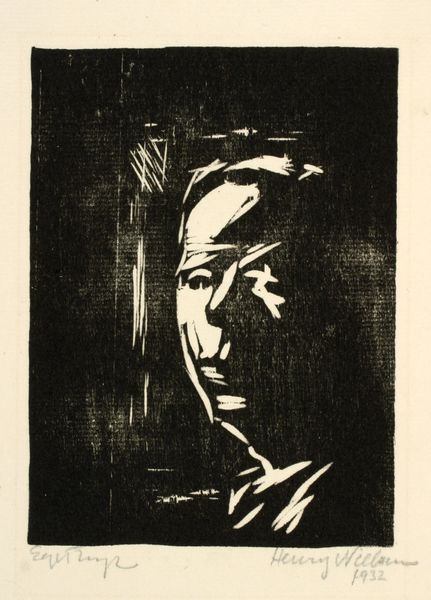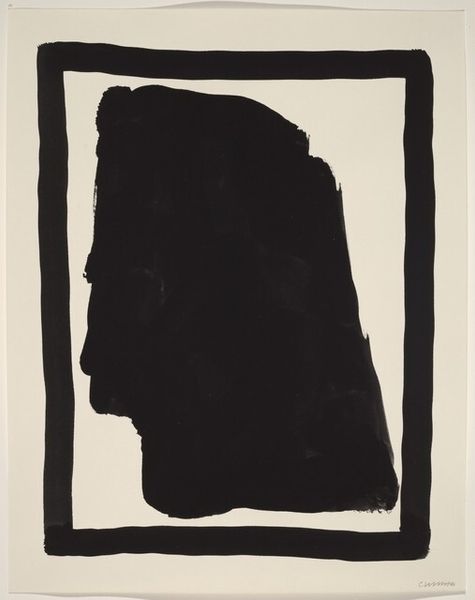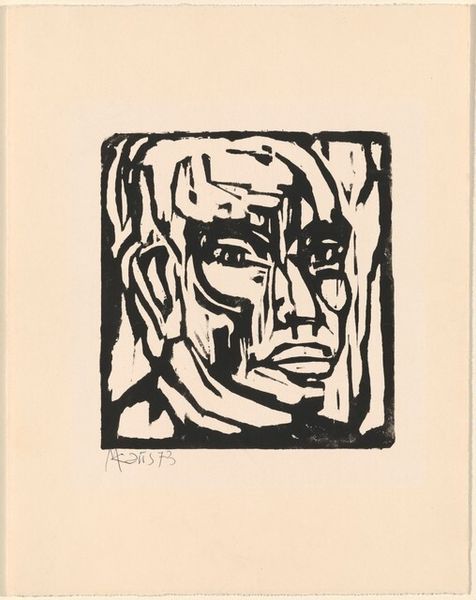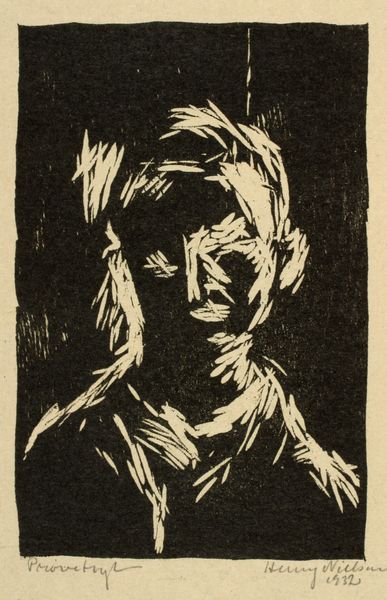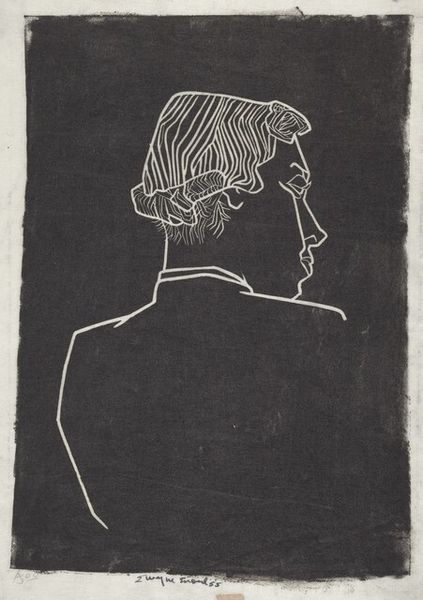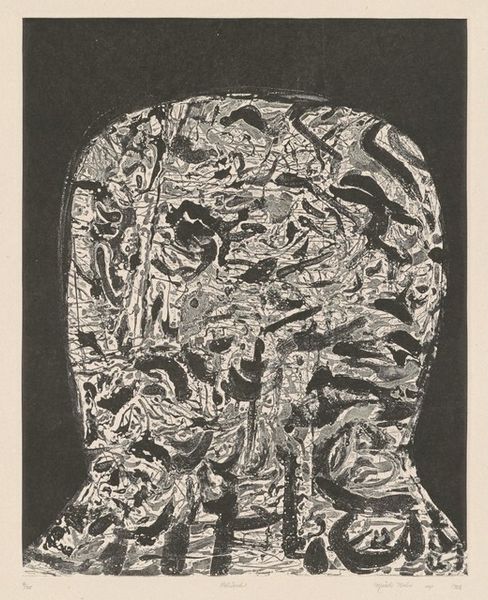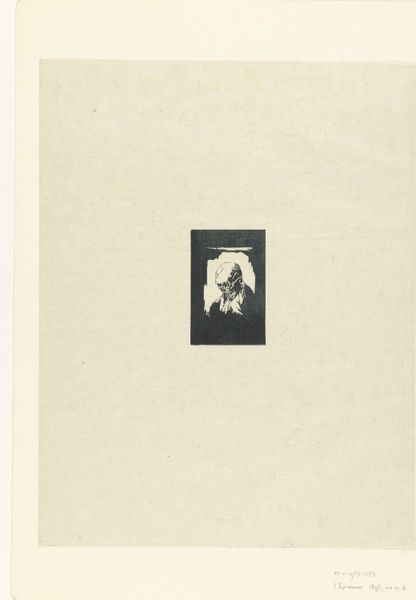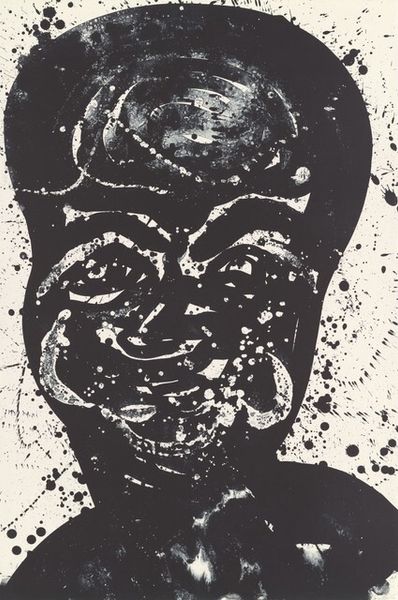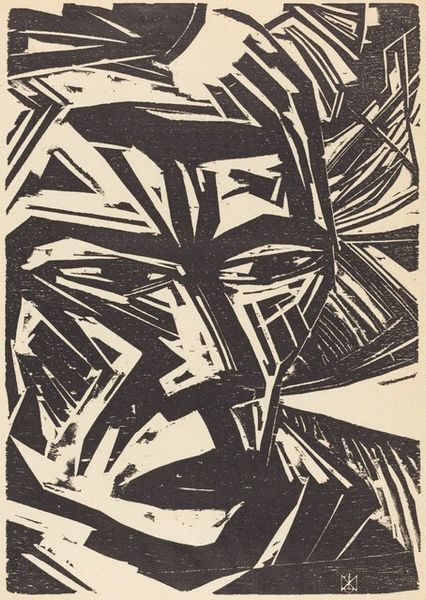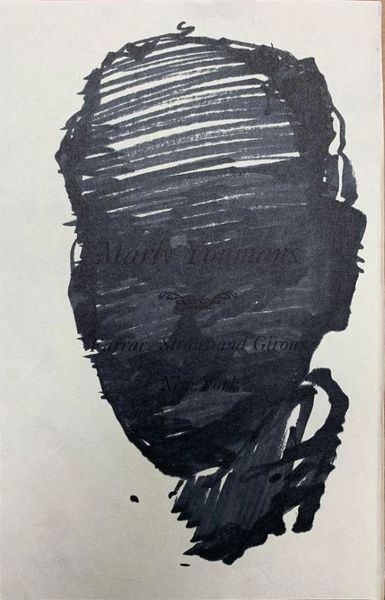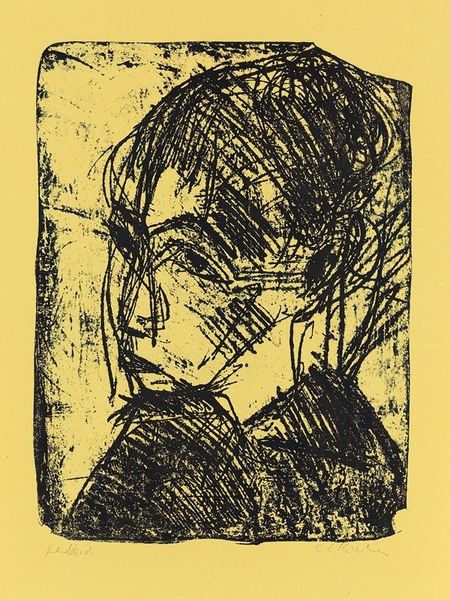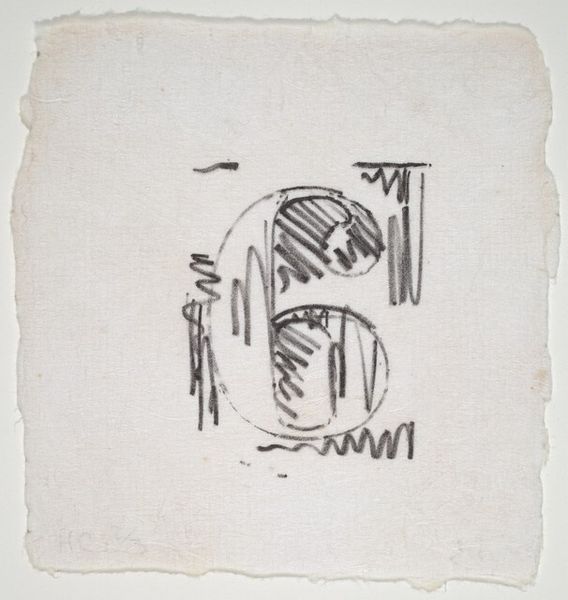
drawing, graphic-art, print, woodcut
#
portrait
#
drawing
#
graphic-art
# print
#
woodcut
#
portrait drawing
#
monochrome
Copyright: Public Domain: Artvee
Editor: This is “Pepi,” a woodcut print portrait from around 1929 by Karl Wiener. It’s a silhouette within a black, almost crudely-hewn frame. It feels stark. How should we interpret this work? Curator: Woodcuts in this period, particularly in Germany and Austria where Wiener was working, often served as accessible and powerful forms of social commentary. The starkness you mention could be seen as a deliberate choice, reflecting the economic and political anxieties of the time. Does the simplified form remind you of anything? Editor: I can see that, it also looks a bit like shadow puppetry! What sort of 'social commentary' could we be seeing here, then? Is it about anonymity, maybe? Curator: Shadow puppetry is an interesting connection! In that context, the choice to obscure detail emphasizes a universality, but more urgently an act of obscuring that is often associated with surveillance or state control. Consider who might have been commissioning or consuming such images, and to what purpose? Is it an individual, a collective? And who is represented in this piece, how does that connect to social dynamics of the 1920s and 30s? Editor: It makes me think about how simplified and reduced figures could function almost as types, broadly read political actors and identities, not necessarily portraits of individual people, then? What purpose does that framing element serve, though? It looks really deliberate. Curator: Exactly. Now think about the frame, too, and the institution of the art world itself, in that time. Who is 'inside' or 'outside' that frame? How does Wiener situate himself, his subject, and the viewer in relation to these power dynamics, through a simplified but striking woodcut? Editor: So the crude frame emphasizes that artifice? It is pretty eye-opening to view "Pepi" with this historical context. The choices made in such a seemingly simple portrait reveal a lot about its place and time. Curator: Indeed. It prompts us to consider how seemingly basic choices artists make about form and subject position art in broader cultural conversations.
Comments
No comments
Be the first to comment and join the conversation on the ultimate creative platform.
